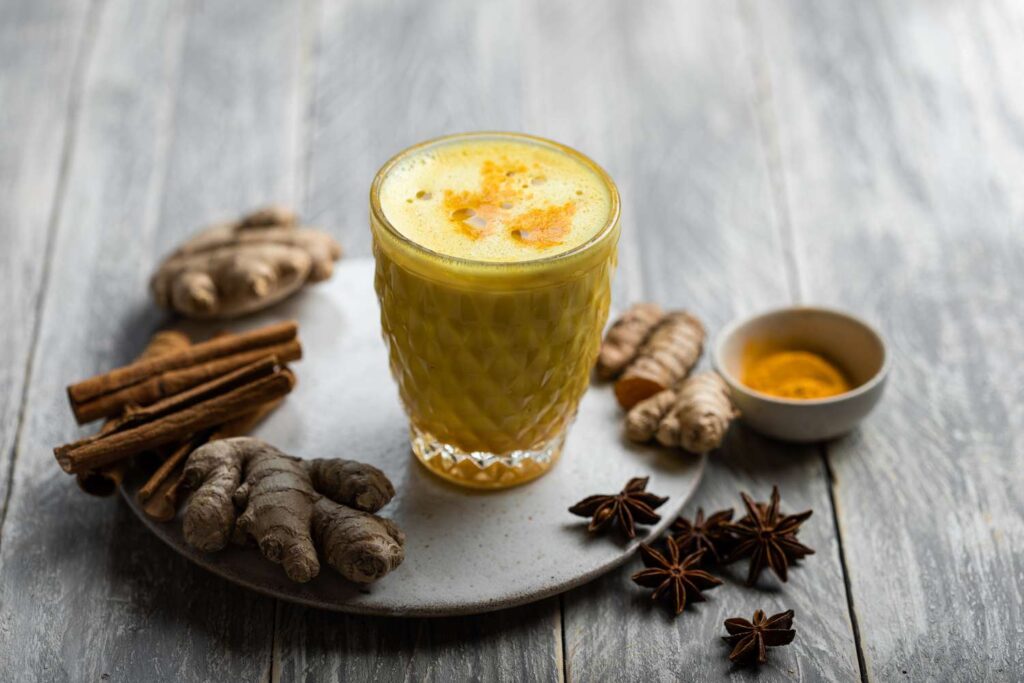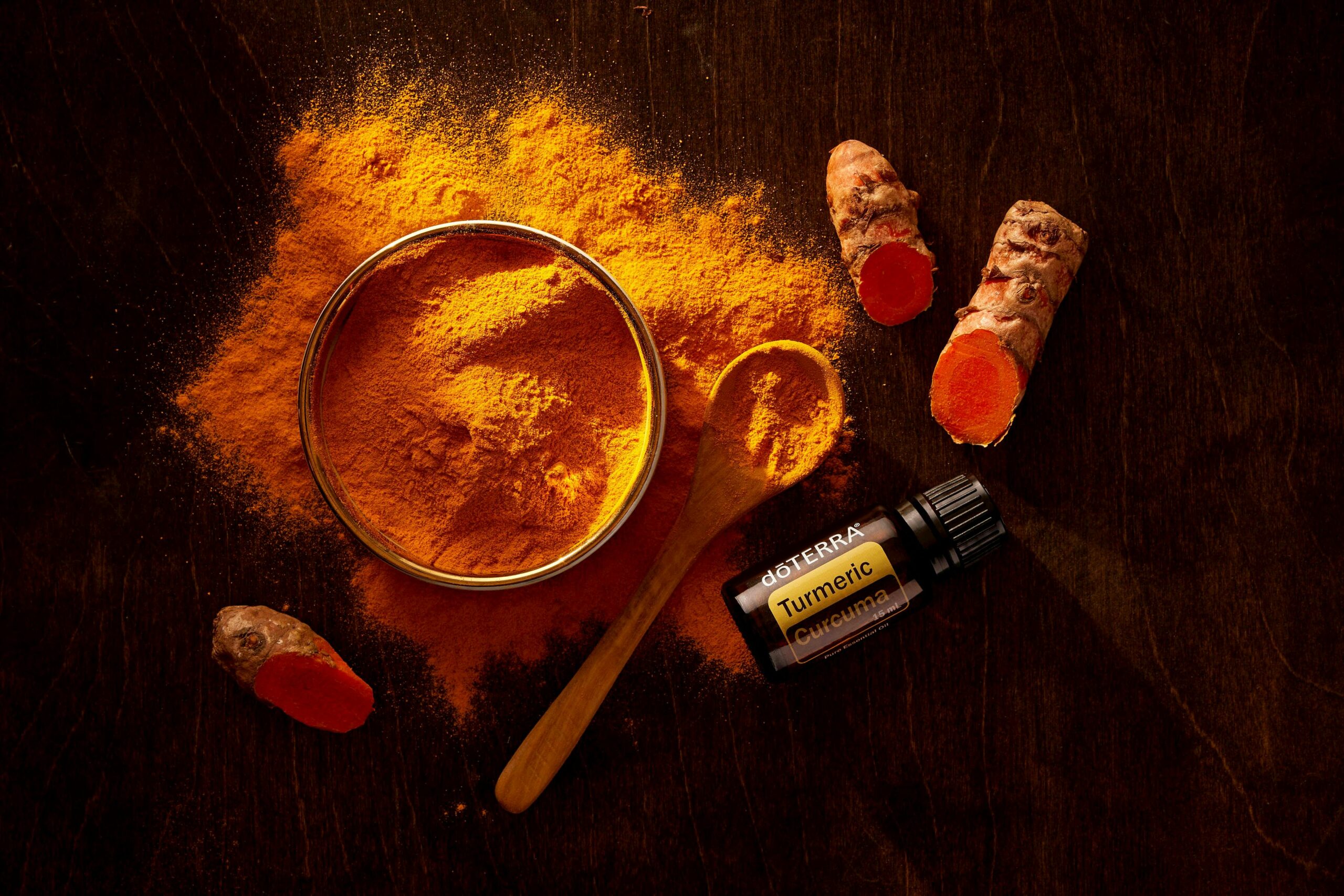Turmeric benefits are a rich, golden-orange spice that is used to improve the nutritional value, color, and flavor of food. Turmeric, a relative of ginger, has been used in cooking for centuries and originates from the rhizome (root) of a native Asian plant. It has also been used in Ayurvedic and other traditional medical practices in China and India.
In addition to providing information on the health benefits of turmeric, Mary-Eve Brown, a clinical dietitian and nutritionist with expertise in oncology at Johns Hopkins Medicine, also offers two recipes that use the spice.
What advantages does turmeric offer?
Brown claims that the active ingredient in turmeric is curcumin, a naturally occurring polyphenol with antioxidant and anti-inflammatory properties.
Brown claims that “curcumin has a wide range of biological activities, not all of which are understood.” “Like other colorful plant-based foods, turmeric is packed with phytonutrients that may help protect the body by shielding cells from damage and scavenging free radicals from pollution and the sun.” Plant-based diets are associated with a decreased risk of cancer and heart disease.
Brown says that “anyone who’s trying to manage inflammation could benefit from adding some turmeric to their foods.” She mentions joint conditions like arthritis, allergies, infections, and inflammatory diseases like colitis.
The Science of Turmeric
Research has been done on turmeric and its components, including curcumin.
According to some research findings, people with osteoarthritis reported less joint pain when using turmeric in recipes, Brown says. “Turmeric’s effects on mood disorders, depression, and dementia have also been studied, but the studies are small, so more research will show whether there is a benefit.”
In addition to these conditions, research has suggested that turmeric may help with:
- The swelling
- Eye degenerative diseases
- The metabolic syndrome
- The state of arthritis
- Elevated blood cholesterol, or hyperlipidemia
- Fear of muscle soreness following exercise
- Kidney health
Supplements containing turmeric
Brown says it’s probably not a good idea to take supplements that contain turmeric. Turmeric has many nutritional benefits, but too much of it can be dangerous.
For instance, if kidney stones run in your family, taking supplements that contain turmeric may increase your risk of developing them. Compared to consuming turmeric tea or foods flavored with the spice, supplements containing curcumin have significantly higher concentrations of the compound.
One disadvantage of turmeric is that its active ingredients, including curcumin, are not bioavailable, meaning they are difficult for the body to absorb. According to Brown, the digestive process also quickly breaks down and gets rid of these beneficial compounds.
Therefore, by regularly including the spice in your meals, you can safely increase your intake of the spice. Adding black pepper to turmeric may help your body absorb its health benefits more effectively. It has been shown that curcumin’s bioavailability is increased by 2000% when combined with piperine, a substance present in black pepper.
“Compared to taking turmeric pills, tinctures, capsules, or gummies, eating whole foods is a better way to get curcumin and most other nutrients,” she says.
Additional Drug Interactions with Turmeric
High dosages of curcumin, like those in concentrated turmeric supplements, may interact with some medications.
Pain relievers: Turmeric supplements can lessen the negative effects of aspirin, ibuprofen, indomethacin, and acetaminophen.
Chemotherapy: Talk to your doctor before taking supplements containing turmeric while receiving chemotherapy. Avoid them if you are on any of the chemotherapy medications listed below:
- Camptothecin
- Mechlorethamine
- Doxorubicin and Cyclophosphamide
Blood thinners: Supplementing with turmeric or curcumin may make people taking warfarin more prone to bleeding.
Immunosuppressive drugs: Tacrolimus side effects may worsen if excessive amounts of curcumin are consumed.
Turmeric’s Adverse Effects
Turmeric can be safely consumed by most people in tea or food, but if you have a spice allergy, you may get a rash, hives, or stomach pain.
Most side effects are associated with very high levels of curcumin, which are found in supplements (pills, capsules, and gummies).

How to Savor Turmeric
Turmeric, which is found in curry powder, is also used to naturally color some types of mustard. Brown claims that she enjoys the earthy flavor of turmeric on its own and that it adds a rich flavor and a lovely color to Thai and other Asian dishes, including stews and chilis. “It works really well in chicken soup,” she says.
According to Brown, she freezes the whole turmeric root in freezer bags and keeps it fresh for up to six months in the produce section.
Because turmeric’s yellow pigment can leave stains on surfaces like countertops and clothing, she advises using caution when working with it. Mild abrasives or cleaners with a chlorine base can remove stains from a variety of surfaces.
Turmeric-infused tea
Like ginger, turmeric root can be used to make a delicious and nourishing tea. This is how Brown goes about it:
- Two tablespoons of chopped turmeric root or two teaspoons of powdered turmeric
- Bring to a boil after adding one or two cups of water.
- Simmer on low for 5 minutes, then strain.
Brown recommends making turmeric tea, which can be drank hot or cold, with lemon and/or honey.
Ingredients for the Creamy Vegan Soup Recipe with Curried Pumpkin Butternut Squash
- Olive oil
- One pound of chopped and peeled pumpkin and butternut squash
- Two chopped shallots and two to three tablespoons of Thai red curry paste
- Two tablespoons of grated turmeric root or two teaspoons of powdered turmeric
- Four cups of stock or vegetable broth
- One can of unsweetened coconut milk (you can use full or reduced fat)
- Add salt and pepper for seasoning.
Directions
- Roast pumpkin and butternut squash at 400 degrees for 10 to 15 minutes with salt, pepper, and olive oil. They are done when they are fork-tender.
- In a large heavy stock pot or Dutch oven, add the turmeric, red curry paste, and shallot. Cook in olive oil for 8 to 10 minutes. The shallot should be soft and translucent.
- Add the vegetable broth, roasted pumpkin, and squash.
- Simmer for at least 20 minutes.
- Taste and adjust with salt, pepper, or red curry paste.
- Add the coconut milk and simmer.
- Blend using a stand blender or an immersion blender.
Conclusion
Turmeric benefits are more than just a flavorful spice; it’s a natural source of powerful antioxidants and anti-inflammatory compounds that may support joint health, heart health, and overall well-being. While research is still ongoing, incorporating turmeric into your diet is a simple, safe, and delicious way to enhance nutrition and support long-term health.
Check Also:https:https://eromecoms.com/erome-login-not-working/
